#St Leonards Street
Text






Citroën Dyane 6, 1979. I have spent the weekend on the south coast of England in Sussex and spotted this near to where we we staying. It's a late series Dyane, the model was positioned up market of the 2CV and was designed by Robert Opron. It was in production from 1967 until 1983, with the Dyane 6 being powered by a 602cc flat twin engine. Perhaps most significantly of all it was parked outside the childhood home of Alan Turing.
#citroën#Citroën Dyane#1979#classic car#flat twin#boxer engine#cars on the street#St Leonards#Alan Turing#yellow#yellow cars#Robert Opron#1970s style
221 notes
·
View notes
Photo
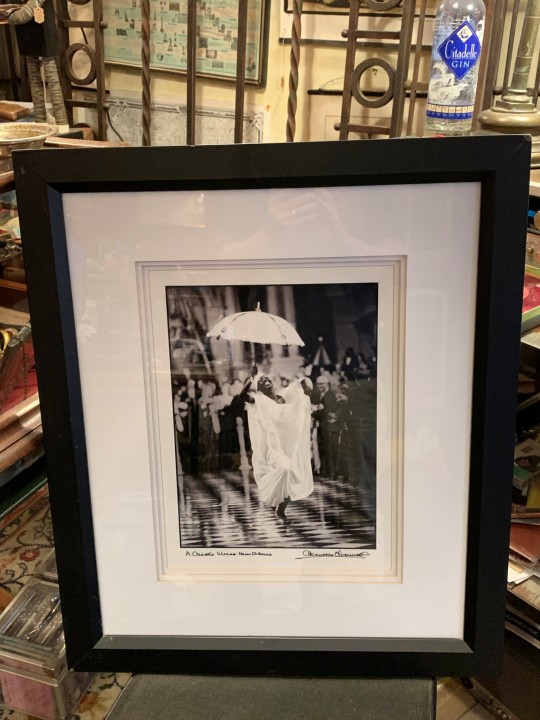




A CREOLE MASS by HERMAN LEONARD
A Creole Mass also known as The Spirit of New Orleans , an image by photographer Herman Leonard ( 1923-2010 ) one of the most iconic images captured by Leonard on his New Orleans period. It captures Michelle Gibson dancing during the performance of “A Creole Mass “ , composed by Wardell Quezergue and performed at the St Louis Cathedral in 2001.
Framed , titled and signed print
Item No. E5686
Dimensions: 28” x 23” (frame )
SOLD
504.581.3733 / tel
#photography#art photography#herman leonard#new orleans#st louis cathedral#the spirit of new orleans#a creole mass#wall decor#magazine street
8 notes
·
View notes
Text
wow end of an era tonight
6 notes
·
View notes
Text
Wait i just realised something. They updated Google streetview last year. I need to check something
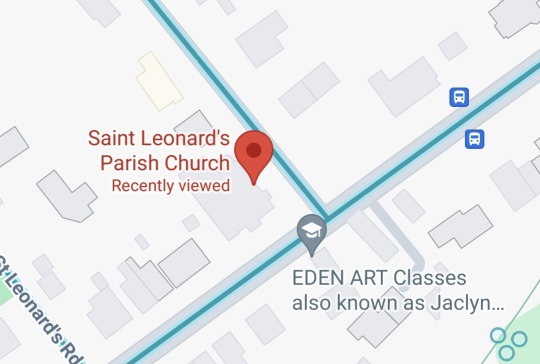


The church sticker at St Leonards church has made it onto street view! 🙌
The other stickers I put on are there too but you can't see them very well (one of them as the blue rectangle lower down), it looks like someone has ripped off the master chief one though
#also i discovered via street view that the masterchief one had only been there since 2020 which is crazy to me i thought it had been there#longer than that#that means the first time i saw it - it had only just been put up#rvb
116 notes
·
View notes
Text


Medals dirks and sgian dhus won by Pipe Major George Stewart McLennan.
McLennan was born at St Leonards on the south side of Edinburgh, his heritage included a fine line of pipers. It's remarkable he made a career in the Gordon Highlanders as he had polio as a young child and couldnt walk until he was four and a half.
McLennan began receiving piping tuition from his father at the age of four, and later received tuition from his uncle Pipe Major John Stewart, and in Highland dancing from his cousin William McLennan. He made rapid progression, winning the Amateur National Championship at the age of nine, and was invited by Queen Victoria to play for her at Balmoral Castle.[
His father enlisted him in the Gordon Highlanders in October 1899 in order to prevent him from joining the Merchant Navy, and he became Pipe major of the 1st Battalion in 1905, one of the youngest ever in the Army.
McLennan was posted at the depot in Aberdeen until 1918, when he was sent to the Western Front to succeed Pipe Major Tom Henderson who had been killed. In May 1918 he collapsed and required fluid to be drained from his lungs in a field hospital.[4] When the war ended he was posted back to Aberdeen, and after he was discharged in 1922 he started working in Aberdeen as a bagpipe maker, at a shop at 2 Bath Street.
He died in May 1929 aged just 46, of lung cancer after a long period of ill health connected to the makeshift operation.
A remarkable 20,000 people lined the route of the procession to Aberdeen station at his funeral on 4 June, before he was interred at Newington Cemetery in Edinburgh.
Pipe Major George SMcLennan also wote many tunes for the bagpipes, some still popular today.
The pics are from a visit to the National War Museum in Edinburgh Castle last week.
19 notes
·
View notes
Photo

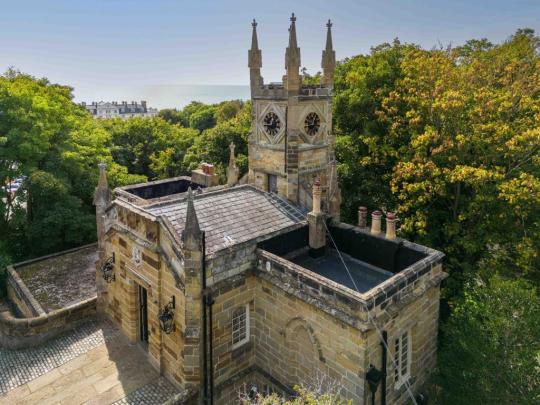
The Gothic Revival Ecclesiastical, one of a kind 1828 Villa, The Clock House, in St. Leonards-on-Sea, East Sussex, England, is on the market for £2,500,000, $2,827,710 approx USD. And, it’s a doozy- $2.8M is a bargain for this.

This home has the best hallways leading to its rooms.
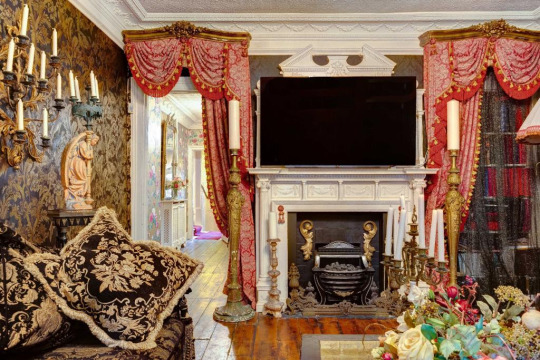
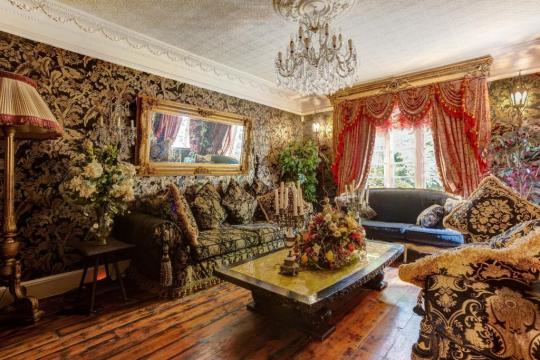

So, here’s the sitting room. I quickly scanned the description b/c it’s very long, and I didn’t see anything about the furnishings coming with the house, but really, if you’re going to buy this place, you NEED the furnishings.
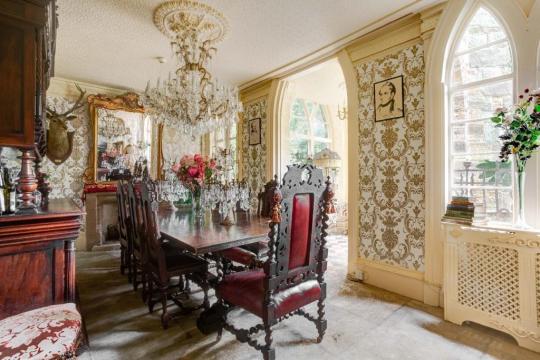
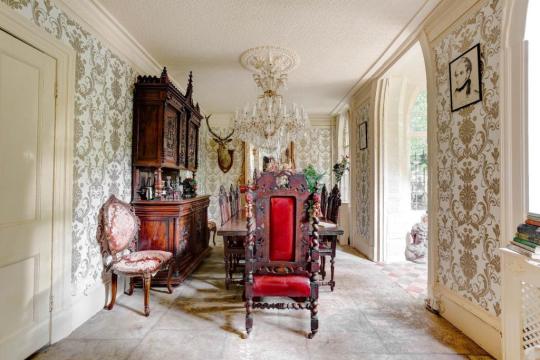
The dining room is a light and bright space.


This kitchen is crazy- it has a regular stove and an Aga.

See what I mean about the halls? Look at the original floor.
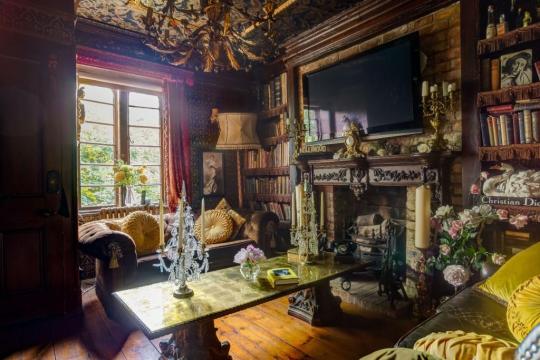
Can you believe the fireplace in the library?

This is the main bd.’s sunroom. Look at the wide plank original floor.


Is this crazy or what? I would have to buy those statues on the wall.


Some amazing bd. isn’t it?


How about the whimsical bath? The Madonna statue is holding a bath house sign.


Hallway, possibly the front entrance.

One of the other bds. There are 4.
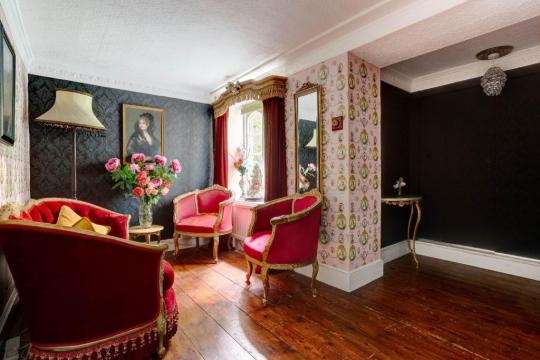

Love the wallpaper in this room.

Here’s another fabulous bath. The tub is right in front of the fireplace.

And, THIS red and gold bd.

The cellar is completely illuminated. Not creepy at all. There’s a workshop in the back, as well. I remember posting this home before and I cannot believe that this couple is selling it. I wonder why.
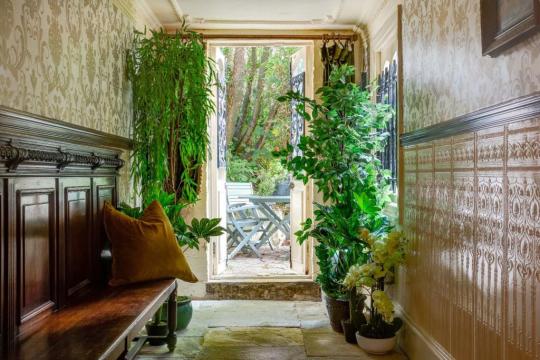
Hallway to the gardens.
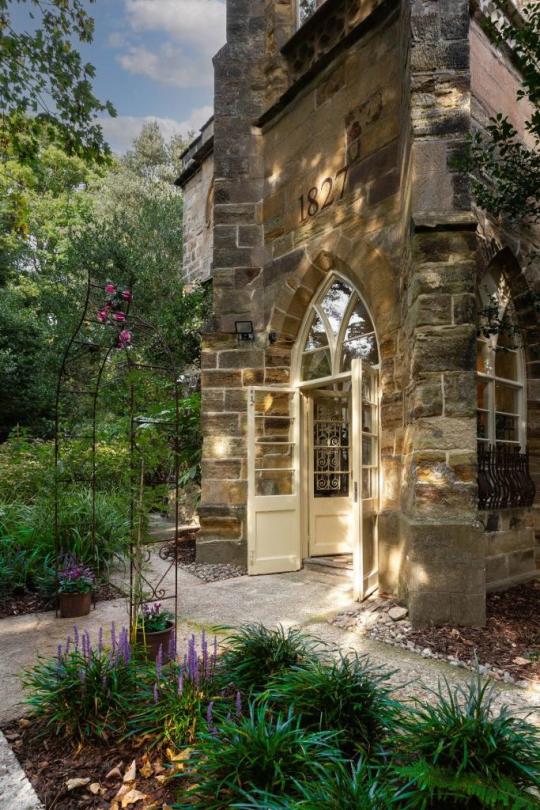
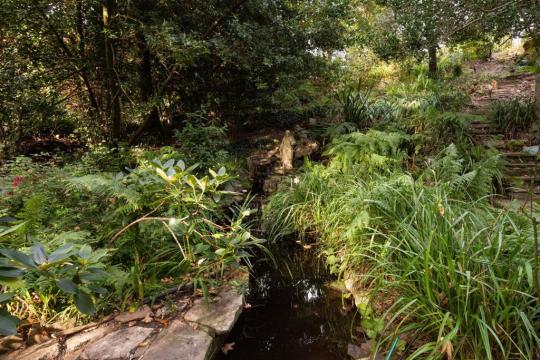



The grounds are incredible, and it’s like an oasis in the middle of the city.
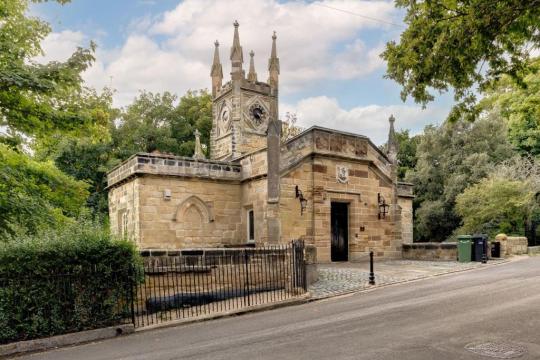
This is the street entrance- the home doesn’t look that large b/c the property goes down in the back.
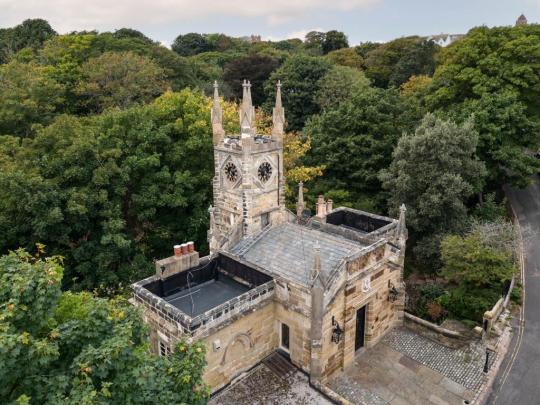
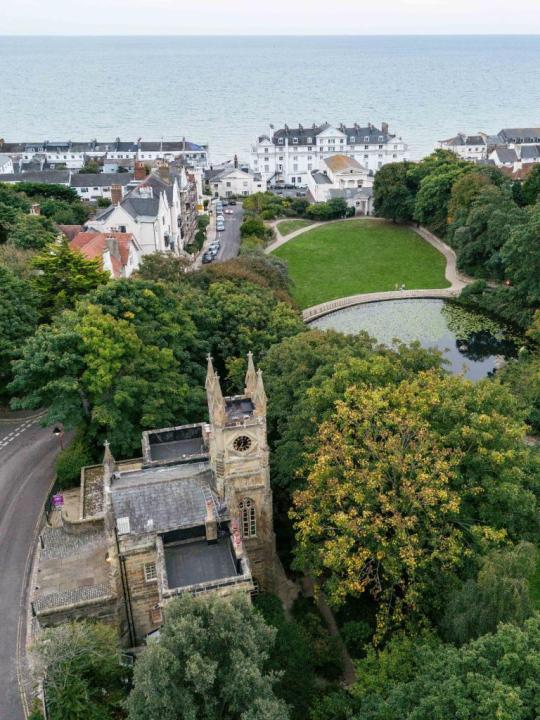
You can see how the property goes in this view. I still would like to know why they’re selling. (Haunted?)
https://www.knightandknoxley.com/property/1228/4-bed-character-property-for-sale-the-clock-house-maze-hill-st-leonards-on-sea/
#historic clock house for sale#gothic architecture#midnight dreamer house#old house dreams#gothic decor#long post
372 notes
·
View notes
Text
The Guardians: How Jack Frost entered a snowball fight with Winston Churchill, J.M. Barrie and Rudyard Kipling
Extracted from Jack Frost: The End Becomes the Beginning by William Joyce

Historical side of Tumblr, did they really knew each other in real life, or is Joyce just going mad as usual 😂
It was a piercingly cold winter night. Jack was leaving the Athenaeum Club. He belongs to many clubs. Private clubs are a vital function of the social life of young and old men in this whirligig era. These clubs are elegant and brimming with friendships, rivalries, and the excitable friction of men with ambition and ideas. It is at the Athenaeum that Jack has made some of his most interesting friendships.
On the night of this report, Frost was seen walking out of the festive warmth of the club with three companions. They were bundled against the cold, laughing and chatting as they trekked their way down the snow-covered steps to the street. As is his habit, Jack hung back a few paces. He enjoys observing the easy joviality of his friends at the end of an evening of fun.
The most affable of the three is young Winston Leonard Spencer-Churchill, whose booming laugh and manner reminds Jack of his old friend Nicholas St. North. Churchill had been a devilish child, full of mischief, and had been kicked out of most of the finest schools in Europe. On this evening he is smoking a huge cigar and is at this point singing the song of one of the schools he had attended.
“Sandhurst was a great school with a wretched song!” he shouted out, interrupting himself midchorus. The other two friends, Joseph Rudyard Kipling and James Matthew Barrie, are both writers of some renown, though tonight they were singing the song of a school they had never attended and were doing so with considerable volume and enthusiasm.
“It would jolly well help if we knew the words,” said Kipling, laughing, but this ignorance did not seem to hamper his and Barrie’s happy attempt.
Jack grinned. He liked his friends best when they behaved less like adults and more like children.
But as the group reached the sidewalk, they passed a huddle of street children who stood shivering in the evening air.
“Please, sirs, a penny for the hungry,” said one child with a practiced, hopeful desperation.
Jack’s friends did not even glance the children’s way. These children were cold and close to starving. Jack saw the ragged clothes. The thin, lanky legs and skinned elbows. Again Jack stayed back, watching as his friends continued down the street.
The children stood quiet and shivering. They watched the happy threesome stagger and wail down the street.
Jack appeared angry with his friends. He knew they may have had childhoods of comfort, but each had experienced great turbulence and heartbreak in their youths. They should not, could not, would not ignore the wretched children they had just passed. They must be made to listen.
So Jack made himself invisible. It is a power he uses subtly. If a party is dull, he will simply disappear. Or if he wants to secretly influence the outcome of an event, being unseen makes his efforts much easier.
At this point in the proceedings he discreetly launched three expertly constructed snowballs at his friends.
Each hit its mark.
All three men’s hats were knocked to the snowy ground. The three then spun around and stared at the children. The children stared back.
Apparently, a war had silently been declared.
“This aggression must not go unanswered,” muttered Churchill as he, Kipling, and Barrie crouched down and began busily packing snowballs.
Though invisible, we surmise that Jack was delighted. He whispered to various children, “Better get busy. They’re bigger than you.” They instantly fell to their knees and began to pack snowballs themselves.
Churchill and Kipling both have military histories and have seen battle, so they knew the necessity of a steady supply of ammunition. Barrie, as records , is the worst shot of the three, so he continued making snowballs while his cohorts took up positions behind a lamppost and a mailbox.
“Wait for my command,” said Churchill, puffing his cigar.
The children were seasoned snowball makers, and they had amassed an impressive hoard of ammo. They wereready to attack, but they seemed uncertain. Again Jack intervened. “Concentrate on the one with the cigar.”
The children were so focused on their enemy that they hadn’t even noticed that Jack was nowhere to be seen. They heard his suggestion, and without questioning it, they acted.
And charged! Their battle cry was high, shrill, and impressive. Eight little voices sounded like an army.
“My word,” said Kipling, astonished.
“Steady!” commanded Churchill.
Barrie stopped his constructions and readied for the attack, a snowball in each hand and several in each pocket.
In an instant the children were upon them. The air was thick with snowballs and shouting and cheers.
“Fire!” yelled Churchill, but his command was muffled by five or six direct hits on his head and shoulders. He fell backward and lay on the street as helpless as an overturned turtle. Four children stood over him and pounded him with snowballs.
“My cigar!” he yelped. And indeed his cigar had been knocked from his mouth, landing somewhere inside his coat.
Kipling and Barrie tried to lend aid, but both were hit with such accuracy that their eyeglasses were caked with thick clumps of snow and neither could see a thing.
The three men were being overwhelmed, routed, in fact. But suddenly, the tide of the battle changed. Twenty or so members of the Athenaeum Club had seen the skirmish from the windows and were rushing out to lend a hand.
Jack had reappeared and raised his staff, and within an instant, he brought about a blinding gale of snow to slow the Athenaeum men.
A smallish boy who looked particularly ragged raised two fingers to his mouth and let out a high, sharp whistle that could be heard for blocks. The boy had not finished his first note when children began to appear from seemingly every direction and swarm toward the fray.
And so this snowball battle became epic. Adults against children. Jack watched with astonishment. What had he triggered?
Old men — older than eighty — who minutes before could barely hobble with canes across a plush dining room carpet, were now rippling over snow-snow-covered cobblestones with the vigor and skill of Roman gladiators.
Gangly half-starved children, some as young as five years old, were standing their ground or attacking with the stalwart cunning of the most seasoned generals.
The blur of a thousand snowballs glistened in the streetlamps’ glow as cheers and laughter of pure exultant joy filled the air. The strange untethered glee of making pretend war with well-packed snow had turned men into boys, and children into heroes.
Jack returned to invisibility, but he stayed in the thick of this battle royal, flying from place to place faster than any snowball. He was heard shouting instructions or guidance to anyone he felt was in need. At first he only helped the children, but as the ruckus continued, he began to urge the Athenaeums on.
So focused were the combatants that none ever wondered who was helping them.
The fight reached a pitch so fevered that one by one participants began to collapse with exhaustion and merriment. There were calls of:
“Stop! Enough!”
“I surrender!”
“I’m done!”
Shouts became laughter. The din of the battle dissolved into a singsong of helpless giggling and gasping and guffaws.
Churchill struggled to his feet. He was laughing with more gusto than anyone. He pulled his still-lit cigar from some deep fold of his coat and took a long and satisfying puff.
“I suggest we call an end to these hostilities,” he said to the spent troops. “I suggest we call this battle a draw.” He took another puff.
The half-block heap of young and old sat panting, their warm breath making a wheezing fog around them.
“I say we are all victors, and so to all must go the spoils,” Churchill continued. “Let us retire to the warmth of the club. I urge that we leave the snow to fall in peace and that we feast like kings!”
Cheers of agreement rang out. As they helped one another to their feet, Churchill began again to sing his old school song, the song of his beloved Sandhurst:
“And so from those who have gone before, to those who are yet to come,
We pass our motto loud and clear, all evil overcome.
As true as is a brother’s love, as close as ivy grows,
We’ll stand four square through our lives to every wind that blows.”
It was then that Frost tactfully reappeared as stealthily as he’d vanished in the first place. Smiling, he watched the scene unfold. Churchill slapped him on the back, still in full-throated song and joined by all who knew the words.

@ariel-seagull-wings @thealmightyemprex @princesssarisa @angelixgutz @amalthea9 @the-blue-fairie @tamisdava2 @mask131
20 notes
·
View notes
Text
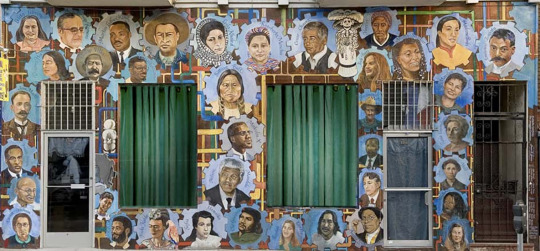
Susan Greene, La Lucha Continua / The Struggle Continues, a collaboration with Freedom Archives, 3260 23rd St – between Mission and Capp Streets, San Francisco, CA, originally painted in 1985, then restored by Susan Greene, post-2003


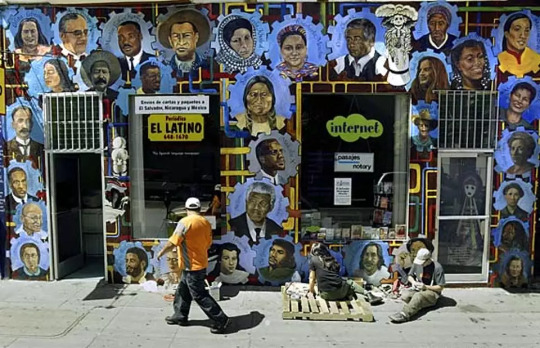
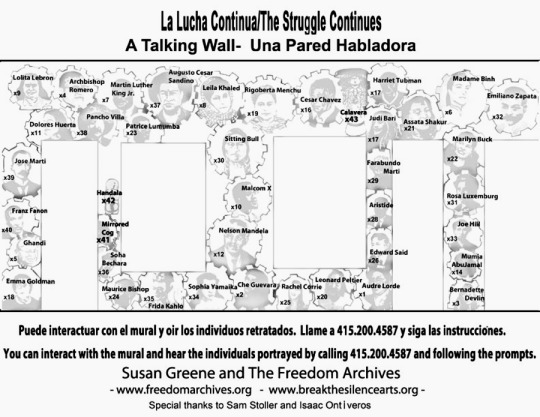
Portraits: Mumia Abu-Jamal, Aristide, Judi Bari, Soha Bechara, Maurice Bishop, Madame Binh, Marilyn Buck, Sitting Bull, César Chávez, Rachel Corrie, Bernadette Devlin, Frantz Fanon, Ghandi, Emma Goldman, Che Guevara, Handala, Joe Hill, Dolores Huerta, Frida Kahlo, Leila Khaled, Martin Luther King Jr., Lolita Lebrón, Audre Lorde, Patrice Lumumba, Rosa Luxemburg, Farabundo Martí, José Martí, Rigoberta Menchú, Leonard Peltier, Archbishop Óscar Romero, Edward W. Said, Augusto César Sandino, Assata Shakur, Harriet Tubman, Pancho Villa, Malcolm X, Sofia Yamaika, Emiliano Zapata
Photos: (1) Freedom Archives; (2-3) Wally Gobetz/Flickr; (4) SFGATE
28 notes
·
View notes
Text
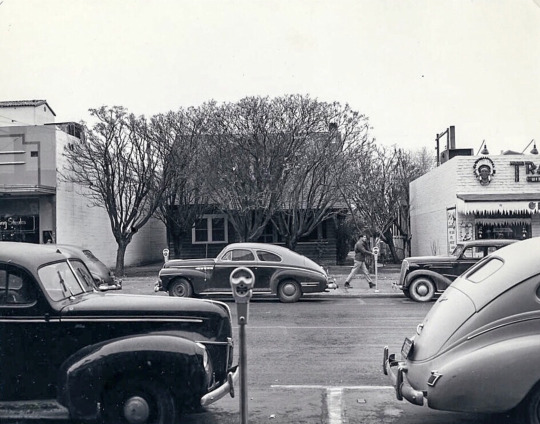
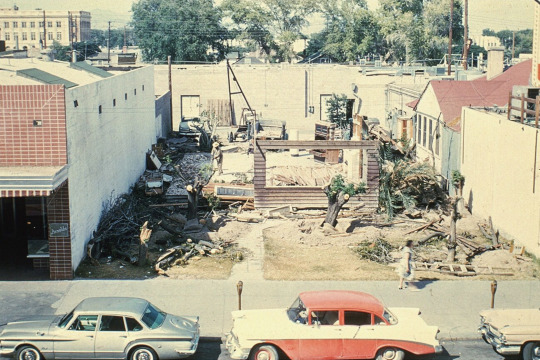
Coughlin residence, 322 Fremont St, c. Late 40s-50s.
Last home on Fremont Street Experience, demolished May 1960.
“This wall and the fireplace were all that remained of the [Coughlin] residence when Leonard Fayle shot this photo in May 1960. It just so happened that Sherwin ‘Scoop’ Garside captured the same house sometime in the decade prior to its demolition.” - Neon Bible
The home was replaced with the current 322 Fremont commercial building in '61.
Photos: Sherwin "Scoop" Garside Photographs (PH-00067) and Fayle Family Photographs (PH-00113), UNLV Special Collections.
40 notes
·
View notes
Text
Court Circular | 22nd November 2023
St James’s Palace
The Princess Royal this morning visited Retrotec Limited near Northiam and was received by His Majesty’s Lord-Lieutenant of East Sussex (Mr Andrew Blackman).
Her Royal Highness later visited Focus SB Limited, Castleham Industrial Estate, Napier Road, St Leonards-on-Sea, and was received by Mr Graham Peters (Vice Lord-Lieutenant of East Sussex).
The Princess Royal, Commandant-in-Chief, St John Ambulance (Youth), this afternoon attended a Reception for Young Achievers at the Priory Church of the Order of St John, St John’s Square, London EC1, and was received by Mr Paul Herbage (Deputy Lieutenant of Greater London).
Her Royal Highness, Chancellor, University of London, this evening attended Foundation Day at Senate House, Malet Street, London WC1, and was received by Mrs Geraldine Norris (Deputy Lieutenant of Greater London).
8 notes
·
View notes
Text
Episode 184 - Horror
This episode we’re discussing the fiction genre of Horror! We talk about fear, control, Goosebumps, bad dogs, horror-comedy, creepypasta, the apocalypse, lizard romance, and more!��
You can download the podcast directly, find it on Libsyn, or get it through Apple Podcasts, Google Podcasts, or your favourite podcast delivery system.
In this episode
Anna Ferri | Meghan Whyte | Matthew Murray | Jam Edwards
Things We Read (or tried to…)
Straight by Chuck Tingle
Mister Magic by Kiersten White, narrated by Rebecca Lowman
I Feed Her to the Beast and the Beast Is Me by Jamison Shea
The Wicked Unseen by Gigi Griffis
Mapping the Interior by Stephen Graham Jones
Leech by Hiron Ennes
The Best Horror of the Year, Volume Fourteen edited by Ellen Datlow
House of Hunger by Alexis Henderson
Five Nights at Freddy’s: Into the Pit: Fazbear Frights #1 by Scott Cawthon and Elley Cooper
Sadako at the End of the World by Koma Natsumi
The Kurosagi Corpse Delivery Service Omnibus, Book 3 by Eiji Otsuka and Yamazaki Housui
Things We Read (but didn’t talk about in this episode)
Be Very Afraid of Kanako Inuki! by Kanako Inuki
Résumé With Monsters by William Browning Spencer
Dead Silence by S.A. Barnes
Carmilla: The First Vampire by Amy Chu and Soo Lee
Hammers on Bone by Cassandra Khaw
A Song for the Quiet by Cassandra Khaw
The Helios Syndrome by Vivian Shaw
Helpmeet by Naben Ruthnum
Other Media (& Authors) We Mentioned
Captain Britain And MI13, Volume 3: Vampire State by Paul Cornell, Leonard Kirk, and Mike Collins
Stephen King
Misery
The Girl Who Loved Tom Gordon
Cujo
The Haunting of Hill House by Shirley Jackson
We Have Always Lived in the Castle by Shirley Jackson
Alien: Isolation (Wikipedia)
Dead Space (2008 video game) (Wikipedia)
R.L. Stine
Goosebumps
Fear Street
Junji Ito
The Enigma of Amigara Fault - “T-this is my hole! It was made for me!”
Junji Ito’s Cat Diary: Yon & Mu
Emily Carroll
Camp Damascus by Chuck Tingle
Smart Podcast Trashy Books: 579. Punk Rock Writing with Chuck Tingle
Candle Cove by Kris Straub
Candle Cove (Wikipedia)
SCP Foundation
SCP-087
The SCP Foundation: Declassified (YouTube)
The Ring (2002 film) (Wikipedia)
We talked more about the novel The Ring in Episode 078 - Supernatural Thrillers
Crapshots Ep608 - The Old Ones (YouTube)
Links, Articles, Etc.
Episode 176: Fantasy
Episode 123: Psychological Horror
Does the Dog Die?
Matthew’s spooky phone case is a variant of this one
Matthew did a “31 Spooky Manga” challenge a few years ago and read a different spooky manga every day in October.
The Midnight Library: Episode 001 - Halloween Poetry
Sound Effects
Big Thunder And Distant Thunder Rain Birds by morvei01
Dramatic Organ, A by InspectorJ
bats1 by sofie
Pigeons (St Stephens Green, Dublin) by iainmccurdy
31 Recent Horror Books by BIPOC Authors
Every month Book Club for Masochists: A Readers’ Advisory Podcasts chooses a genre at random and we read and discuss books from that genre. We also put together book lists for each episode/genre that feature works by BIPOC (Black, Indigenous, & People of Colour) authors. All of the lists can be found here.
This list features horror fiction by BIPOC authors published within the last 3 years.
Jackal by Erin E. Adams
Vampires of El Norte by Isabel Cañas
The Haunting of Alejandra by V. Castro
The Spite House by Johnny Compton
The Reformatory by Tananarive Due
And Then She Fell by Alicia Elliott
Our Share of Night by Mariana Enríquez, translated by Megan McDowell
Piñata by Leopoldo Gout
Never Whistle at Night: An Indigenous Dark Fiction Anthology edited by Shane Hawk and Theodore C. Van Alst Jr.
Natural Beauty by Ling Ling Huang
The Weight of Blood by Tiffany D. Jackson
Bad Cree by Jessica Johns
My Heart is a Chainsaw by Stephen Graham Jones
The Salt Grows Heavy by Cassandra Khaw
Woman, Eating by Claire Kohda
Lone Women by Victor LaValle
Sisters of the Lost Nation by Nick Medina
Silver Nitrate by Silvia Morena-Garcia
This Thing Between Us by Gus Moreno
Green Fuse Burning by Tiffany Morris
Out There Screaming: An Anthology of New Black Horror edited by Jordan Peele
Flowers for the Sea by Zin E. Rocklyn
Manmade Monsters by Andrea L. Rogers
Monstrilio by Gerardo Sámano Córdova
I Feed Her to the Beast and the Beast Is Me by Jamison Shea
Chlorine by Jade Song
Midnight Storm Moonless Sky: Indigenous Horror Stories by Alex Soop
There's No Way I'd Die First by Lisa Springer
She Is a Haunting by Trang Thanh Tran
Tell Me Pleasant Things about Immortality: Stories by Lindsay Wong
White Horse by Erika T. Wurth
Give us feedback!
Fill out the form to ask for a recommendation or suggest a genre or title for us to read!
Check out our Tumblr, follow us on Instagram, join our Facebook Group, or send us an email!
Join us again on Tuesday, November 7th when we’ll be discussing the non-fiction genre of Crafts and Crafting!
Then on Tuesday, December 5th we’ll be talking about the genre of Suspense Fiction!
6 notes
·
View notes
Text
10 characters, 10 fandoms, 10 tags
Tagged by : @oftincturedwords (and it didn't take me a month to do them all!!!)
Now, making this decision has been painful because ten aren't enough so in the most random order (aka fanart saved on my gallery):
Tom Iceman Kazansky (Top Gun);
Elim Garak (Star Trek Deep Space Nine);
Leonard Bones McCoy (Star Trek AOS my honorary dad);
Camina Drummer (The expanse);
Seven of Nine (ST Voyager and Picard);
Dana Scully (The X Files);
Della Street (Perry Mason, 2020);
Beth Dutton (Yellowstone);
Greta Gill (A League of Their Own);
Mo (Mo).
No pressure tags: @pinkasrenzo, @sliderkerner, @hozukitofu, @another-tblr-fangirl, @karus-mari, @river-silvestri, @feetoffire, @mysty-swirl, @dannykaffee,@calkale
7 notes
·
View notes
Note
anon who wants to get into blur, may i present some song recs from their 9 studio albums?
inertia, sing, there's no other way, she's so high, bang, luminous (leisure, 1991)
for tomorrow, beachcoma, peaches, bone bag, villa rosie, coping, colin zeal, advert (modern life is rubbish, 1993)
parklife, girls & boys, this is a low, clover over dover, to the end (the francoise hardy duet please), london loves, end of a century (parklife,1994)
the universal, charmless man, he thought of cars, mr robinson's quango, fade away (the great escape, 1995)
song 2, beetlebum, dancehall, death of a party, country sad ballad man, you're so great, bustin n dronin (blur, 1997)
tender, no distance left to run, caramel, trailerpark, coffee and tv, swamp song, battle, trimm tabb, music is my radar, the 4 bugman remixes of the band members, black book (13, 1999)
out of time, sweet song, battery in your leg, good song, crazy beat, ambulance (think tank, 2003)
the lonesome street, ong ong, my terracotta heart, mirrorball, new world towers, ghost ship (the magic whip, 2015)
the ballad, everglades for leonard, barbaric, russian strings, the swan, avalon, st. charles square, sticks and stones (the ballad of darren, 2023)
Wow thank you! @ curious anon from earlier, this one's for you (and me. I have yet to do a Blur deep dive and here's my chance)
3 notes
·
View notes
Text
Walls, Ruins, Minster, & Market - York, England

Today was absolutely amazing - we walked the entire route of the old City Walls of York. We started at the Mickelgate, shown above, where we climbed the stairs and reached the wall, we chose to walk in a clockwise direction around the city. The views from up on the wall were fantastic:

Walking along the portion of the wall that runs parallel to Station Road.

York Minster, in the distance, what an impressive sight!
At the end of the Station Road section, we dropped down off the wall and crossed the River Ouse and entered the Museum Gardens. There are multiple ruins within the gardens, as well as a museum (which we did not visit). The ruins are stunning:

St. Leonard's Hospital entryway.
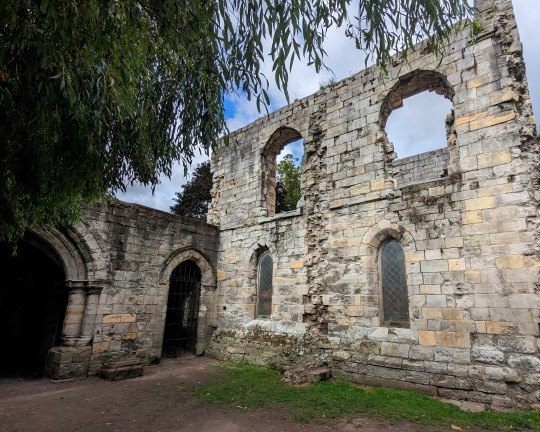
Walls of St. Leonard's Hospital (above) and cloisters (below).
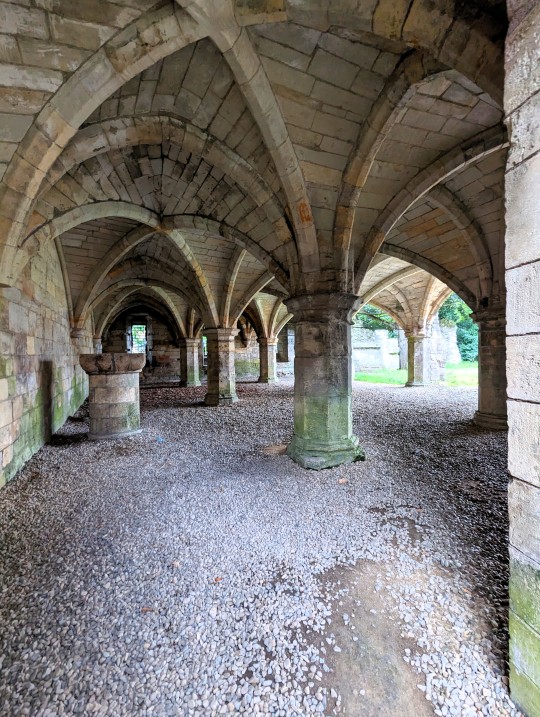
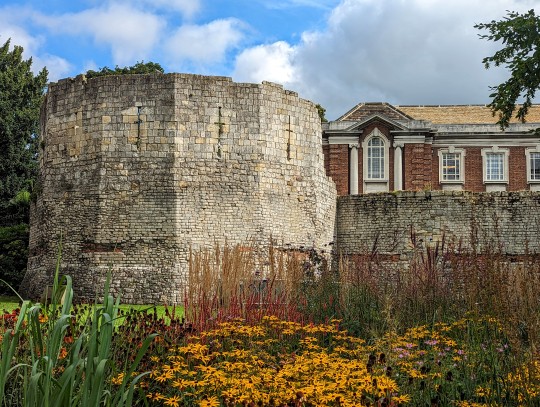
Multi-angular tower, built by the Romans in 107 AD.

The ruins of St. Mary's Abbey, built in 1089 AD, pictured above and below.
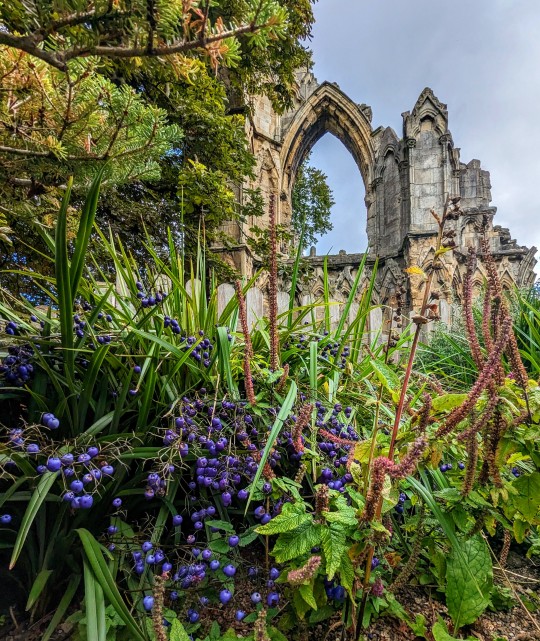
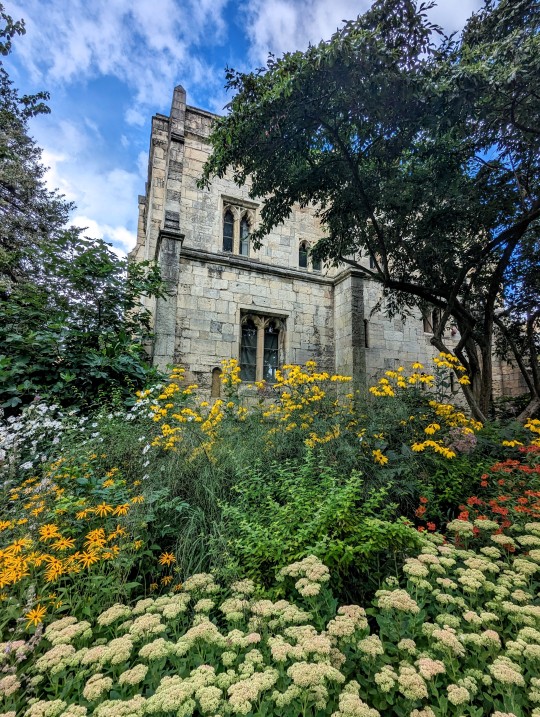
St. Mary's Lodge and some of the beautiful blooms in the gardens.
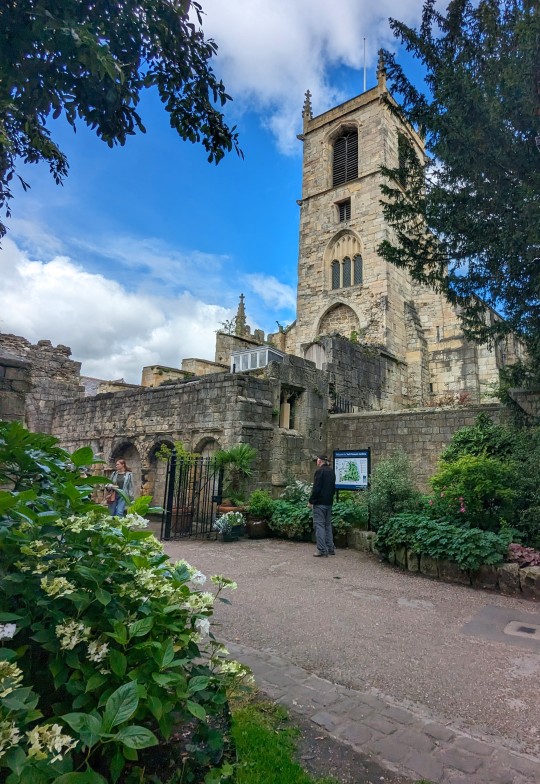
St. Olave's Church.

The York Art Gallery.
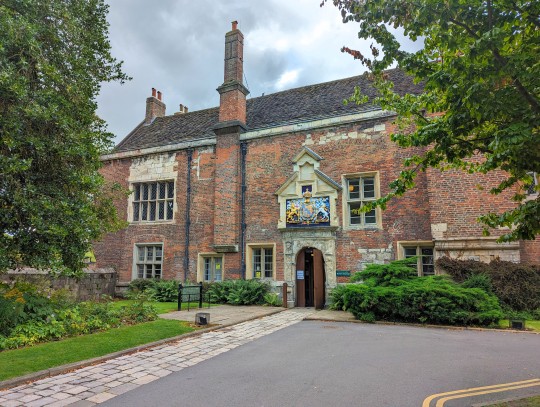
The King's Manor - a house was originally built on this site in 1270 AD, it housed the Abbot of St. Mary's Abbey. It was substantially rebuilt in the late 15th century. It housed the President's Council and several kings stayed here over the years. It is now part of the University of York.
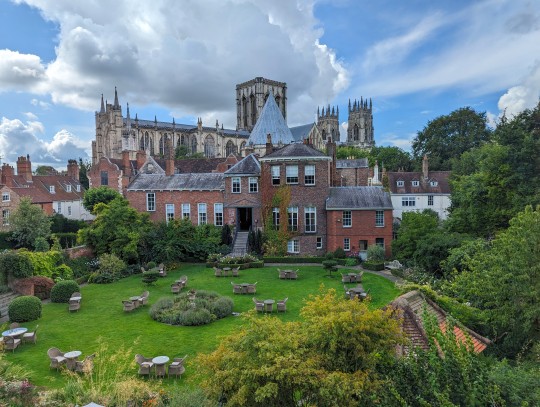
We climbed back up onto the walls and continued our walk - this was the garden of a gorgeous hotel and, of course, York Minster in the background.
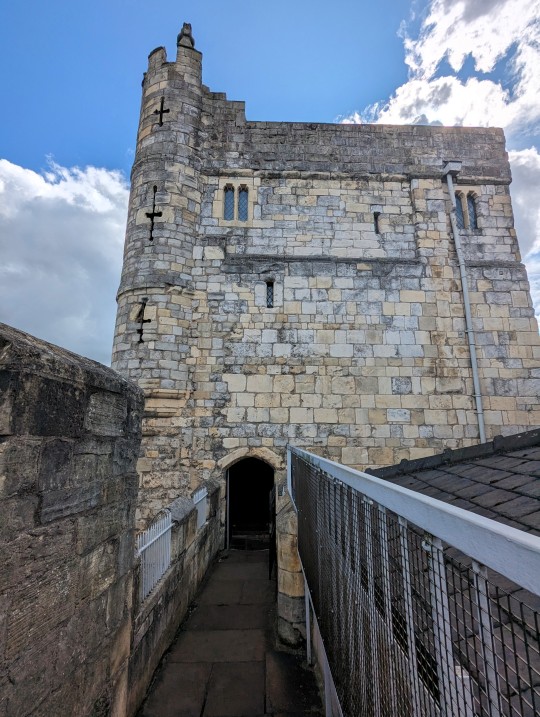
Approaching one of the towers, which housed a small gift shop.

One of the multiple staircases we encountered as we made our way around the walls.

The walls were so cool and look at the amazing weather we had today!
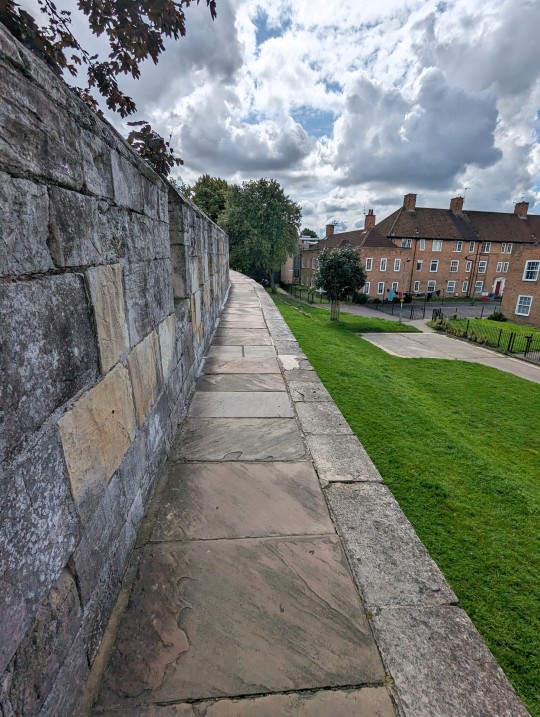
We made our way back to where we started our walk - a total of 3.4 kilometers, all of which was spectacular.
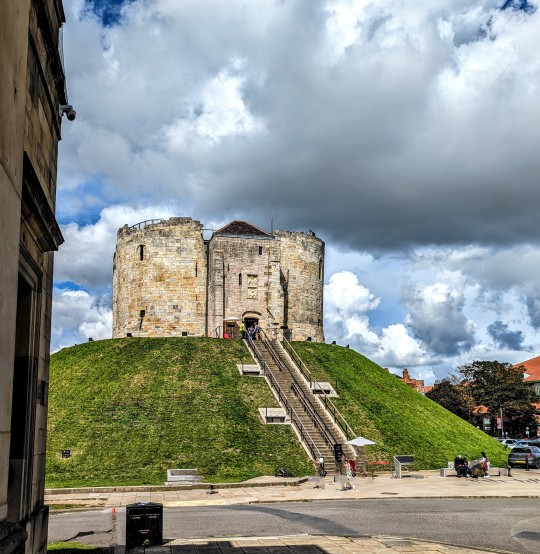
Clifford's Tower - originally an 11th century timber tower, it was burned down in 1190 (after York's Jewish community, some 150 strong, was besieged here by a mob and committed mass suicide). It was rebuilt in the 13th century and probably used as a treasury and prison in later years.

A quick stop at O'Neill's for an adult beverage. This was after we had met a gentleman and his daughter while crossing the street - we proceeded to have a 20-minute conversation with him about our trip and American politics - people here are not afraid to talk about politics. Everyone we meet wants to discuss it - they are fascinated by us, I guess.

We did a quick walk through the Shambles Market, but it was a bit of a zoo and we decided that we would be happier somewhere else and moved on.
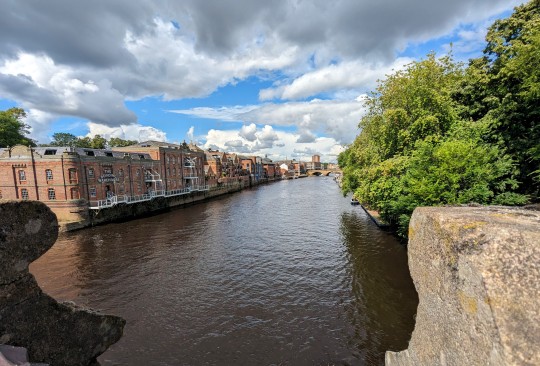
Lovely view of the River Ouse during our walk in York.
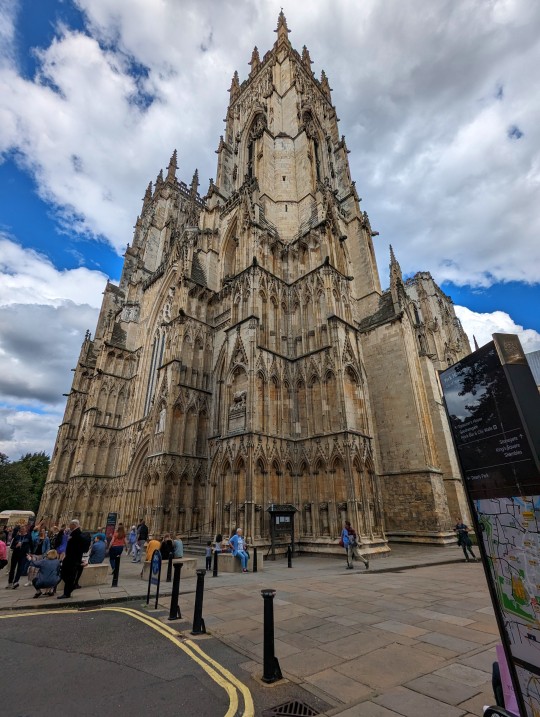
We finally made our way to York Minster - it is massive. It took us a good 20 minutes to walk around the perimeter of it. We chose not to go inside, but we did take a few pictures of the exterior:
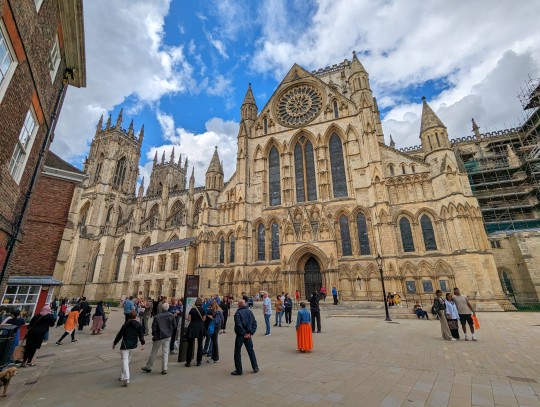
One side of the Minster.
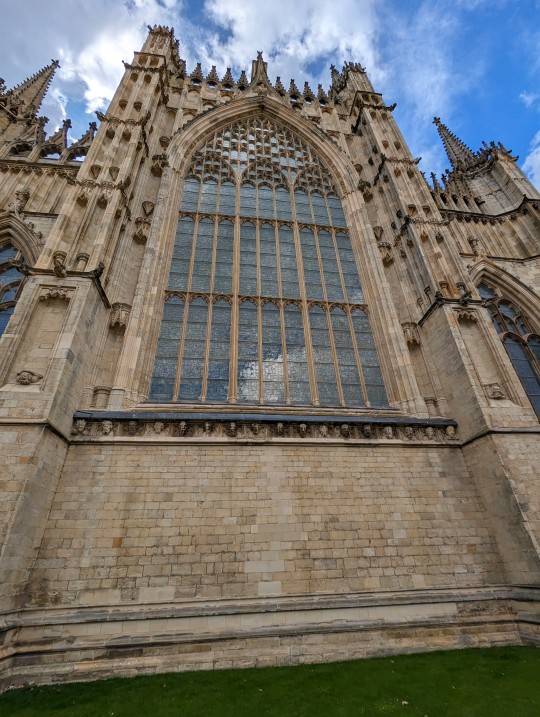
The backside of the Minster.
After walking around the Minster, we headed back towards our Airbnb - passing a couple of other gorgeous old buildings in York.
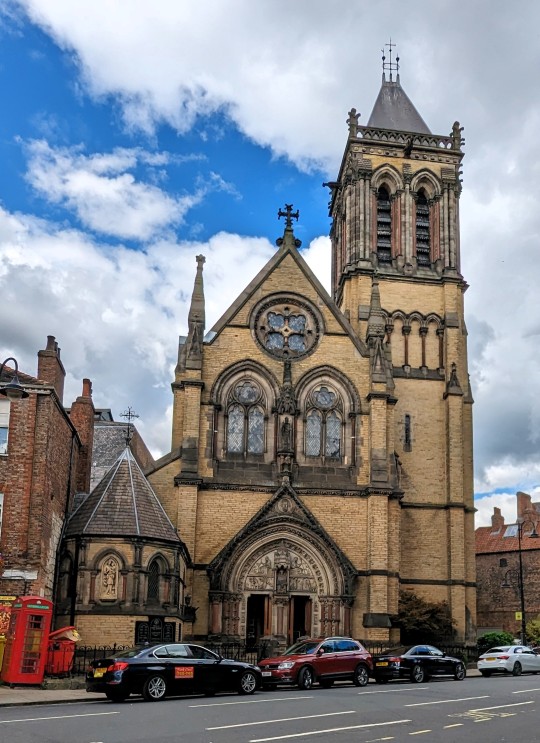
York Oratory.
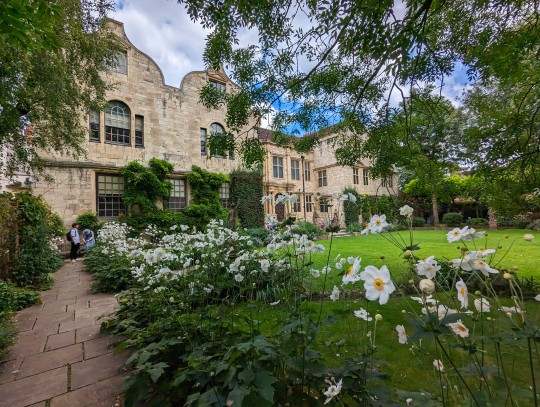
The Treasurer's House.
What a magnificent and full day in York. We decided to eat dinner at one of the pubs near our Airbnb, a little ways away from the city center - which was extremely busy due to the horse racing event. We had a lovely meal and even enjoyed a sticky toffee pudding afterwards.
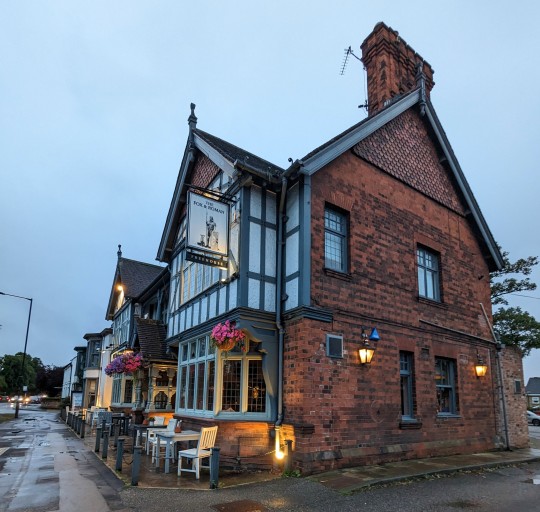
The Fox and Roman - a wonderful neighborhood pub by our Airbnb.
4 notes
·
View notes
Photo

The first of the 1944 gasser incidents occurred at a house on Grant Ave., Mattoon, on August 31, 1944. Urban Raef was awakened during the early hours of the morning by a strange odor. He felt nauseated and weak, and suffered from a fit of vomiting. Suspecting that he was suffering from domestic gas poisoning, Raef's wife tried to check the kitchen stove to see if there was a problem with the pilot light, but found that she was partially paralyzed and unable to leave her bed.
Later that night (some contemporary accounts refer to the time as the morning of the following day), a similar incident was also reported by a young mother living close by. She was awakened by the sound of her daughter coughing but found herself unable to leave her bed.
The next day, September 1, there was a third reported incident. A Mrs. Kearney, of Marshall Avenue, Mattoon, reported smelling a strong, sweet odor around 11:00 pm. At first she dismissed the smell, believing it to be from flowers outside of the window, but the odor soon became stronger and she began to lose feeling in her legs. Mrs. Kearney panicked and her calls attracted her sister, Mrs. Ready, who was in the house at the time. Mrs. Ready also noticed the odor, and determined that it was coming from the direction of the bedroom window, which was open at the time. The police were contacted, but no evidence of a prowler was found. At around 12:30 am, Bert Kearney, Mrs. Kearney's husband (a local taxi driver who had been absent during the time of the attack), returned home to find an unidentified man hiding close to one of the house's windows. The man fled and Kearney was unable to catch him. Kearney's description of the prowler was of a tall man dressed in dark clothing, wearing a tight fitting cap. This description was reported in the local media, and became the common description of the gasser throughout the Mattoon incident. After the attack, Mrs. Kearney reported suffering from a burning sensation on her lips and throat, which were attributed to the effects of the gas.
Initially, it was suspected that robbery was the primary motive for the attack. At the time of the incidents, the Kearneys had a large sum of money in the house, and it was surmised that the prowler could have seen Mrs. Kearney and her sister counting it earlier that evening. Local newspapers incorrectly reported this incident as being the first gasser attack.
In the days following the Kearney attack, there were half a dozen similar attacks, though none of the purported victims were able to provide a clear description of the prowler, and no clues were found at the scene of the attacks. The first specimen of physical evidence was found on the night of September 5, when Carl and Beulah Cordes of North 21st Street returned home around 10:00 pm. After spending a few minutes in the house they noticed a piece of white cloth, slightly larger than a man's handkerchief, sitting on their porch next to the screen door. Beulah Cordes picked up the cloth and smelled it. As soon as she inhaled, she became violently ill. She described the effect as being similar to an electric shock. Her face quickly began to swell, she experienced a burning sensation in her mouth and throat, and began to vomit. As with other victims, she also reported feeling weak and experiencing partial paralysis of her legs. Beulah Cordes later hypothesized that the cloth had been left on the porch in order to knock out the family dog, which usually slept there, so that the prowler could gain access to the house unnoticed.
In addition to the cloth, a skeleton key, described as looking "well used," was reportedly found on the sidewalk adjacent to the porch, along with a large, almost empty, tube of lipstick. The cloth was analyzed by the authorities, but they found no chemicals on it that could explain Beulah Cordes' reaction.
The same night a second incident was reported, this time in North 13th Street, at the home of Mrs. Leonard Burrell. She reported seeing a stranger break in through her bedroom window and then attempt to gas her.
Public concern over the alleged gassings quickly rose, the FBI became involved, and the local police issued a statement calling on residents to avoid lingering in residential areas, and warning that groups set up to patrol for the gasser should be disbanded for reasons of public safety. Chief of Police C.E. Cole also warned concerned citizens to exercise due restraint when carrying or discharging firearms.
During this period, there was also an increase in physical evidence of attacks being reported, ranging from footprints allegedly being discovered underneath windows to tears being found in window screens.
By September 12, local police had received so many false alarms (mostly from citizens believing that they smelled gas, or that they had seen a prowler) that they reduced the priority afforded to gasser reports and announced that the entire incident was likely the result of explainable occurrences exacerbated by public fears, and a sign of the anxiety felt by women while local men were on war service.
22 notes
·
View notes
Text

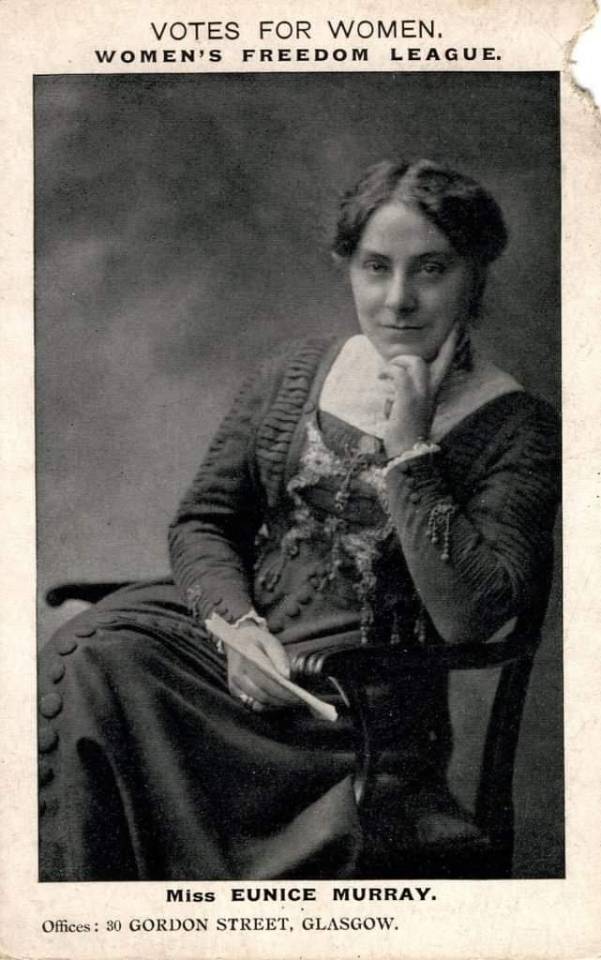

Eunice Guthrie Murray was born on 21st January 1878 in Cardross.
Eunice Murray was the daughter of a well-known Glasgow lawyer, Dr David Murray and Frances Porter Murray, Murray was one of the founders of the Glasgow Ladies Higher Education Society in 1876, both her parents were both supporters of the women's movement, her mother, Frances was born in New York, and raised in Scotland, was a suffragette. Frances’s parents both of whom were active abolitionists, emigrated to Glasgow in 1844.
Murray attended the progressive St Leonard School in St Andrews, where she became involved in philanthropic activities. She was active in the local branch of the League of Pity, volunteered regularly at a local settlement, and was an advocate for temperance. On 9th November 1896 she recorded reading about the formation of the National Union of Women’s Suffrage Societies, commenting
‘I should like to join such a society for the question of the emancipation of my sex is a stirring one and leads to vital matters’.
Given her background it is hardly surprising that along with her mother and her sister, Sylvia Murray, she joined the Women’s Freedom League. The WFL had a strong presence in Scotland, and from 1909 onwards Murray was the secretary for ‘scattered members’—all those who did not live in Edinburgh, Glasgow, or Dundee. Eunice was one of the three Scottish members on the WFL’s national executive committee and in 1913 was described as president for Scotland of the WFL.
The Women’s Freedom League was a non-violent militant group most famous for first chaining themselves to railings and leading the 1911 Census boycott. Inspired after attended the International Women’s Suffrage Alliance in Budapest in 1913, Eunice Murray was arrested for obstruction when she tried to address a meeting near 10 Downing Street on women’s suffrage.
Unlike the Pankhursts’ Women’s Social and Political Union (WSPU) and the National Union of Women’s Suffrage Societies (NUWSS), the WFL continued to campaign for the women’s suffrage throughout the First World War. Murray was an active feminist who had published numerous leaflets on women and their position in society such as The Illogical Woman. Like many feminists, Murray argued for the vote based on the unique roles of men and women. She observed, ‘We have always held, and hold now, that it is because men and women are so different, and not because they are so alike, that we require the vote.
In 1918, women in Britain finally won their right to vote and stand in general elections, if they were over 30 and met minimum property qualifications, and Eunice was quick to take advantage of this major breakthrough and stood as a candidate in Glasgow, Bridgeton in the 1918 election, the only Scottish woman in the first election open to women in 1918, she was unsuccessful, coming third. The results being Coalition Liberal Alexander MacCallum Scott 10,887, Labour James Maxton 7,860 and Independent Eunice Murray 991.
The election was held in the midst of the Spanish Flu epidemic with 327 deaths in the Glasgow that week, compared to 386 the previous week. Schools and docks were closed when half a million Glaswegians took to the polls, of which just over one-third were newly enfranchised women. In response to a claim that all women candidates were pacifists she wrote to the Spectator on 23rd November 1918, ‘I believe that the war we have just fought and won was a righteous one, and that it was the duty of newly enfranchised women to support the country’.
The election saw the defeat of the Asquith Liberals and the landslide of the Coalition Liberals. Murray was not deterred by her defeat and went to on to have an active political life. Elected as councillor in 1923 to Dunbartonshire Council, Murray was also the founder and President of the Scottish Women’s Rural Institute in the area.
Eunice Murray died on 26th March 1960 having led an active and inspirational life and today we remember her as the first women to break the barrier in Scotland to stand as an MP.
12 notes
·
View notes